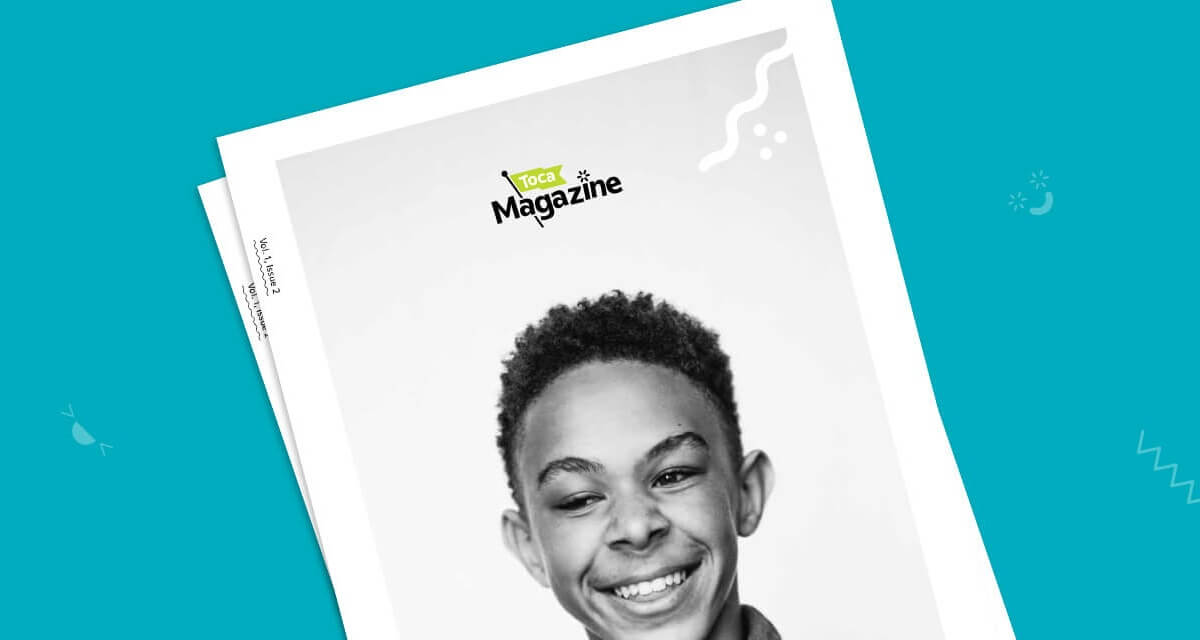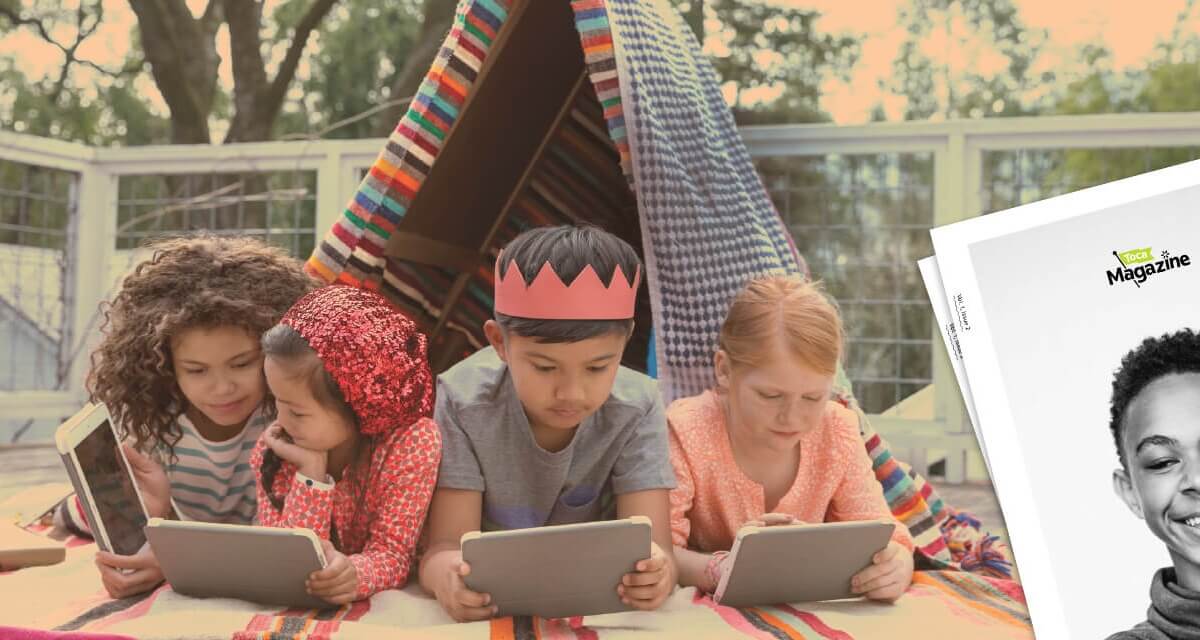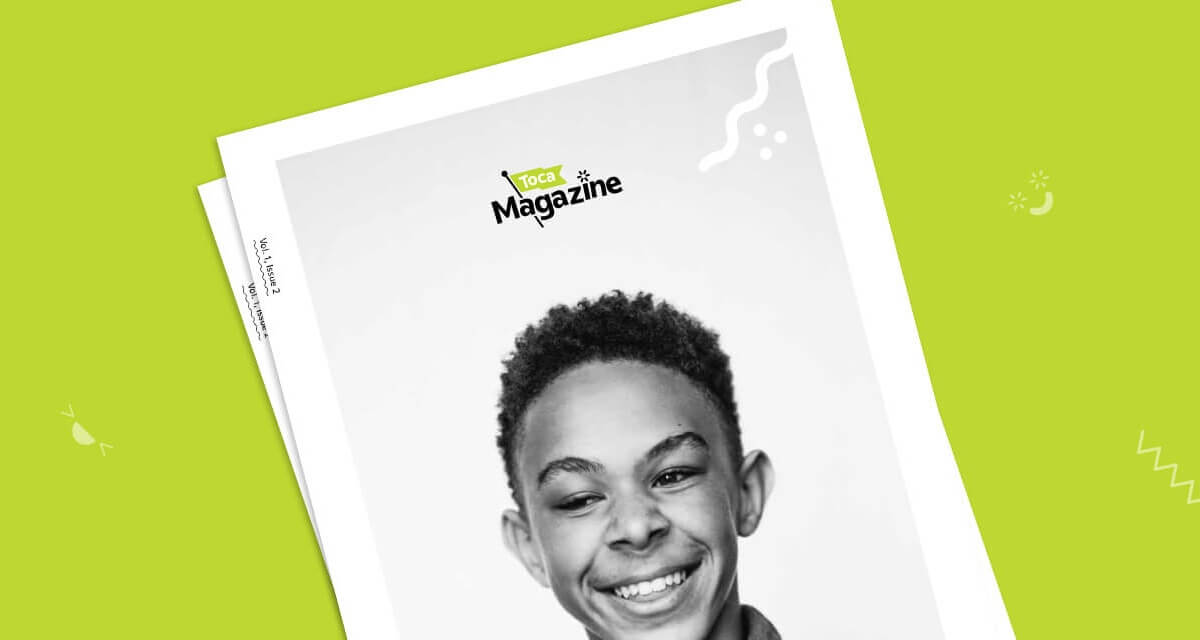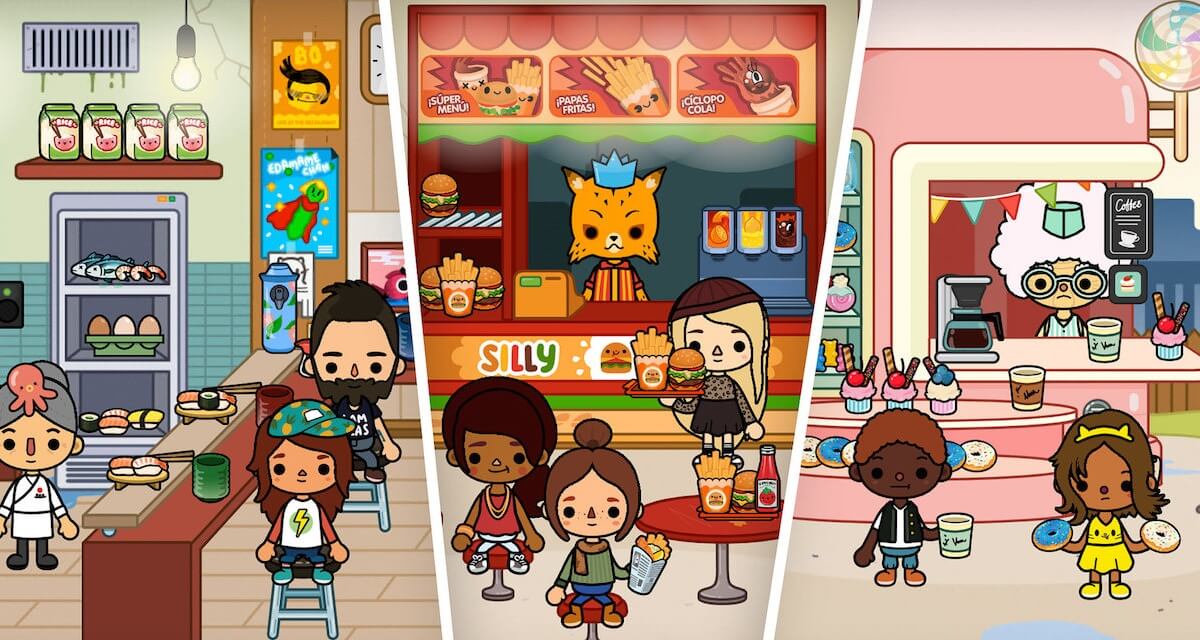The Toca Life team strives to create a diverse cast of characters to populate the make-believe world. Here’s how and why.
- By
- Parker Barry
The Toca Life series is a kid favorite, in part because the apps empower kids to tell the stories they want to tell in the way they want to tell them. Toca Magazine asked four Toca Team members to give us a behind-the-scenes look at how they created the diverse set of characters.
- Daniel Abensour, lead artist
- Mathilda Engman, head of consumer products
- Petter Karlsson, play designer
- Rebecca Tell, artist
Mathilda, you were on the team that created the very first Toca Life app, Toca Life: Town. What were some of the considerations in terms of offering kids a diverse set of characters?
 Mathilda: For Toca Life: Town, we had the ambition of creating an all-star ensemble of characters that kids had interacted with in previous Toca Boca apps. To be able to do this, we wanted to create a design system that could give all characters the same possibilities to do the same things. When selecting characters from the big character catalogue of our previous apps, we already from the beginning wanted to be sure to have a diverse mix of characters. We looked at things like gender balance, balance between characters with darker and lighter skin colors, age and balance between human characters and fantasy characters.
Mathilda: For Toca Life: Town, we had the ambition of creating an all-star ensemble of characters that kids had interacted with in previous Toca Boca apps. To be able to do this, we wanted to create a design system that could give all characters the same possibilities to do the same things. When selecting characters from the big character catalogue of our previous apps, we already from the beginning wanted to be sure to have a diverse mix of characters. We looked at things like gender balance, balance between characters with darker and lighter skin colors, age and balance between human characters and fantasy characters.
Toca Life: Vacation is the fourth app in the Toca Life series, so there was already a good foundation in terms of creating a diverse set of characters. Petter, how did you approach working with characters for Vacation?
 Petter: To continue to make the set even more diverse, we looked into some gaps that we felt could be improved. Also, Toca Boca has had a lot of internal discussions about diversity since the previous apps were made. This has to do with bringing a bigger, company-wide perspective on diversity to Toca Boca, raising everyone’s awareness and knowledge. As everyone learns more, we all strive to do better.
Petter: To continue to make the set even more diverse, we looked into some gaps that we felt could be improved. Also, Toca Boca has had a lot of internal discussions about diversity since the previous apps were made. This has to do with bringing a bigger, company-wide perspective on diversity to Toca Boca, raising everyone’s awareness and knowledge. As everyone learns more, we all strive to do better.
What’s the process like for creating characters for an app like Toca Life: Vacation or other apps in the Life series?
 Daniel: Well, usually it starts with the play designer mapping the general needs for the app, so we can cover as many different play patterns as possible. The play designer will write down the gender, age and ethnicity of the characters with a small description of their roles in the scenes. It usually ranges from as simple things as parents, kids and babies to be able to role-play families, to some more precise roles that will fit the locations we’re making.
Daniel: Well, usually it starts with the play designer mapping the general needs for the app, so we can cover as many different play patterns as possible. The play designer will write down the gender, age and ethnicity of the characters with a small description of their roles in the scenes. It usually ranges from as simple things as parents, kids and babies to be able to role-play families, to some more precise roles that will fit the locations we’re making.
After that, there’s a lot of freedom to define the characters themselves. We have sessions with the other artists to go deeper in how to shape the characters’ personalities and looks. We usually start by sketching the characters to get a feeling of their look and feel, thinking about which details will make them stand out. And then we finish by drawing them in Illustrator, finding the right color palette and creating their different facial expressions.
 Rebecca: Also, did you know? None of the characters in the Life series have the same skin color. Even if some look similar, they have been altered a tiny bit so they are all unique. I think that’s a great thing!
Rebecca: Also, did you know? None of the characters in the Life series have the same skin color. Even if some look similar, they have been altered a tiny bit so they are all unique. I think that’s a great thing!
Vacation offers kids the opportunity to play with different family structures. What is this about?
Petter: Early on in play testing we noticed that the notion of family was really important when playing with the theme of vacation. It’s easy to fall into the norm of thinking everyone grows up in a nuclear family and travels with them. That is of course not the case. Kids grow up in all kinds of family constellations, and we would like to represent a bit more than before with Vacation. In the end, kids can still change everything in the app and play in whatever way they like. But we decided to show a wide range of families in the default state of the app. For instance, there is a two-dad family with kids, and one girl is traveling with her mother and grandmother in our view. Kids can play their own family or a pretend family, and that family can consist of single parents, grandparents, gay parents, several different ages of kids, make-believe characters and so on.
What are some of the challenges you faced creating the characters for Toca Life: Vacation?
Daniel: I think the main challenge for Toca Life: Vacation was to avoid having a tourists vs. locals feeling. It’s an imaginary location with an imaginary culture, so we tried to stay away from clichés. And trying to offer a vacation place that could be understood as such by as many kids as possible, which would have to be also conveyed by the characters.
Petter: When I had done a rough layout of the characters and their professions, most of the service positions, like hotel staff and cashiers, had unintentionally turned out to be filled by dark-skinned females. One of the artists noticed this, and we talked about how to change it. As an example, we had one of the characters switch places with a bright-skinned male.

Why is it important to have a diverse set of characters for kids to play with?
Daniel: It’s important for every kid to find an avatar to tell their stories. One of the most common thing kids do when they start playing a Toca Life game is to find themselves, so it’s kind of our duty to provide them with the tools they need to play. We try to offer as many profiles as possible to enable all the amazing stories kids want to tell.
Rebecca: We aim to make something that will make kids all around the world feel included, and I think that the Life series is a great example of that. Kids usually choose the characters that look the most like themselves and their family, and it’s important that we support that so they can have a completely worry-free play session. We try to see it from the kid’s perspective, and I feel super proud to be a part of Toca Boca and a team who are as concerned about this as I am.
Petter: As a producer of kids’ media, we acknowledge that whatever we do, it will have impact. We are creating a world that kids will play in, and everything you design will—intentionally or not—carry norms and possibly stereotypes, good or bad, from our society. We have chosen to take on several aspects of diversity and to make conscious design choices with those in mind. We do this to show all kids that they have a place in the world we’re creating.
Mathilda: Preventing kids from feeling excluded by the products that we make is important. By showing kids that there are many different types of people in the world that we live in, and by representing more than one type of people, I believe that our inclusion style sends a message that there should be room in the world for everyone. In the end it’s about equality.




